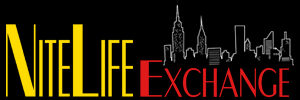
By Marilyn Lester***There’s not a shadow of doubt that the world-class NY Pops—a classic, string-based orchestra of around 80 musicians—is a mighty force in the world of popular music. This tight unit shines under the direction Maestro Steven Reineke, whose energy, podium choreography and conducting style is always a thrill to  watch. In the 2023-2024 Season opener at Carnegie Hall, Stern Auditorium/Perelman Stage, the program was a departure from previous years with a focus on youth. In 21st Century Broadway, four young guest artists performed a set of tunes that appeared on the Broadway stage no later than the year 2000 (although some were written before that).
watch. In the 2023-2024 Season opener at Carnegie Hall, Stern Auditorium/Perelman Stage, the program was a departure from previous years with a focus on youth. In 21st Century Broadway, four young guest artists performed a set of tunes that appeared on the Broadway stage no later than the year 2000 (although some were written before that).
Solos by Stroker and Kilgore included “All That Matters” (Gary Barlow, Eliot Kennedy) from Finding Neverland and “Fabulous, Baby!” (Alan Menken, Glenn Slater) from Sister  Act for the former; and for Stroker, Dear Evan Hansen’s “Waving Through a Window” (Benj Pasek, Justin Paul) and Spamalot‘s “Diva’s Lament” (Eric Idle, John Du Prez). Together, the two sweetly offered the endearing “For Good” (Stephen Schwartz) from Wicked, which just celebrated an amazing 20 years on the Rialto.
Act for the former; and for Stroker, Dear Evan Hansen’s “Waving Through a Window” (Benj Pasek, Justin Paul) and Spamalot‘s “Diva’s Lament” (Eric Idle, John Du Prez). Together, the two sweetly offered the endearing “For Good” (Stephen Schwartz) from Wicked, which just celebrated an amazing 20 years on the Rialto.
Other 21st Century musicals featured in the program were Waitress, The Color Purple, Catch Me if You Can, In the Heights, Anastasia, A Man of No Importance and The Last Five Years. Spring Awakening was recognized at the Act One close with the quartet delivering a robust “The Song of Purple Summer” (Duncan Sheik, Steven Sater). The four stars also closed Act Two, with Dear Evan Hansen‘s “You Will Be Found,” joined by members of The Susan E. Wagner High School Concert Chorus: Jesse Lefurge, William Alexander, Amanda O’Leary, Sean Penias, Kaitlyn Attanasio, Jordan Oliver Bueno, Fatu Kiadii, Sand Morales and Paul Corn.
As for an overview, in the last twenty years, audiences have been aging and it’s important to attract young ‘uns to ensure the sustainability of arts organizations. But new styles in music have emerged as well as the way songs are interpreted and presented, which may not appeal to the older audience members who currently are the mainstays of cultural outlets. Today, there’s an emphasis on sound over storytelling. Belters prevail and sound technicians amp up volume. This style is a challenge for a classic orchestra; some numbers did feature certain instruments forward (guitar, piano, percussion) to meet the challenge, but to some extent it’s still a battle of sweet strings versus amplified singing.
At the end of it, was this experiment a success? The answer is ultimately in the hands of audience members to decide.


 Curtains (John Kander, Fred Ebb). What might have been apparent to many is that, unlike familiar, classic productions such as Camelot, My Fair Lady or Cabaret, there’s not a sense of familiarity with the score—specifically the well-known melodies that comprise it. But there’s no question that the execution of each of these 21st century openers featured beautiful arrangements and exquisite playing.
Curtains (John Kander, Fred Ebb). What might have been apparent to many is that, unlike familiar, classic productions such as Camelot, My Fair Lady or Cabaret, there’s not a sense of familiarity with the score—specifically the well-known melodies that comprise it. But there’s no question that the execution of each of these 21st century openers featured beautiful arrangements and exquisite playing.


